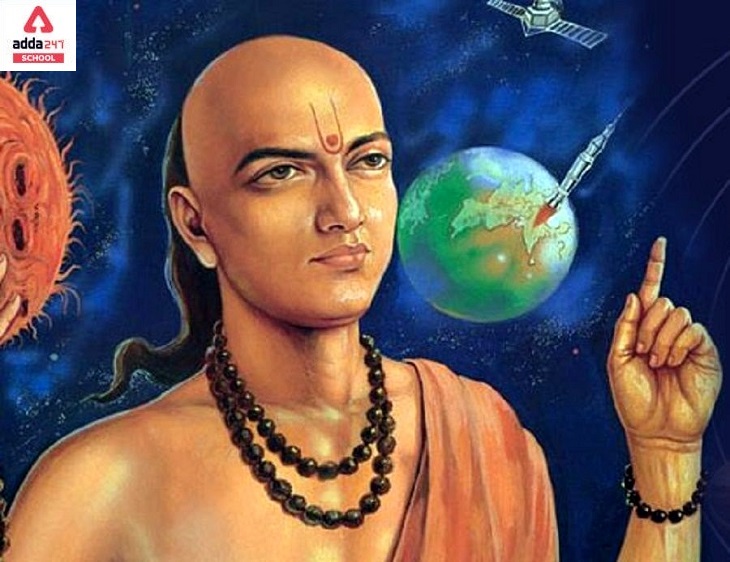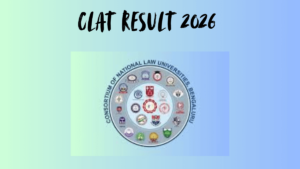Who is Aryabhatta?
Have you ever imagined what it would have been the life without zero? No, you wouldn’t have had gone too far in thinking life without zero, but what if I told you that zero didn’t exist before Aryabhata gave the world the digit “0”. Who was Aryabhata and how was his life? This is what we will be discussing in this article.
Aryabhatta (476-550)
The Āryabhaṭīya and the Arya-Siddhanta are among the works of Aryabhata, the earliest of the prominent mathematician-astronomers from the classical age of Indian mathematics and astronomy. Aryabhata counts as a notable early physicist of India due to his unambiguous discussion of the relativity of motion.
Aryabhata is thought to have been born in the year 476, according to legend. Aryabhata claimed to be from Kusumapura or Pataliputra, which is today’s Patna, Bihar.
It has been suggested that Aryabhata began in the aśmaka. It is thought to be today’s Kodungallur, which was the historical capital of Thiruvanchikkulam in ancient Kerala, and all of this is based on the assumption that Koṭuṅṅallūr was once known as Koṭum-Kal-l-ūr. The fact that multiple commentaries on the Aryabhatiya were written in Kerala shows that it was Aryabhata’s primary residence and activity. However, many commentators from outside Kerala, since the Aryasiddhanta was almost unknown in Kerala at the time, present a quite different picture.
Aryabhatta: Education
He most likely proceeded to Kusumapura for additional studies and stayed there for a period, and both the Hindu and Buddhist traditions identify Kusumapura as modern-day Patna. Aryabhata was the head of a Kusumapura institution, according to a poem. Furthermore, given the university of Nalanda was located in Pataliputra at the time and housed an astronomical observatory, Aryabhata may have also served as the head of the Nalanda institution. Aryabhata is also said to have built an observatory at the Taregana Sun Temple in Bihar.
Aryabhatta: Works
Aryabhata wrote various treatises on mathematics and astronomy, some of which have since been destroyed.
His greatest work, Aryabhatiya, a compendium of mathematics and astronomy, was widely cited in Indian mathematical literature and has been preserved to the present day. Arithmetic, algebra, plane trigonometry, and spherical trigonometry are all covered in Aryabhatiya’s mathematical section. Continued fractions, quadratic equations, sums-of-power series, and a table of sines are also included.
The Arya-Siddhanta is known from the writings of Aryabhata’s contemporaries, Varahamihira, and later mathematicians and commentators, such as Brahmagupta and Bhaskara I. This work appears to be based on the older Surya Siddhanta and uses the midnight-day reckoning system rather than the sunrise-day reckoning system used in Aryabhatiya. A description of several astronomical instruments was also included. Al ntf or Al-nanf is a third passage that may have survived in the Arabic translation. It purports to be a translation by Aryabhata, although the work’s Sanskrit name is unknown. It is described by Ab Rayhn al-Brn, a Persian scholar and chronicler of India, who dates it to the 9th century.
Aryabhatta: The Legacy
Aryabhata’s work inspired the Indian astronomy tradition and, through translations, influenced other neighbouring nations. During the Islamic Golden Age, the Arabic translation was especially significant. Al-Khwarizmi cited some of his findings, and Al-Biruni stated in the 10th century that Aryabhata’s disciples believed the Earth rotated on its axis.
The birth of trigonometry was influenced by his definitions of sine, cosine, versine, and inverse sine. He was also the first to give sine and versine (1 cos x) tables with an accuracy of four decimal places in 3.75° intervals from 0° to 90°.
In fact, the contemporary terms “sine” and “cosine” are mistranslations of Aryabhata’s phrases jya and kojya. As previously stated, they were translated into Arabic as jiba and kojiba, which Gerard of Cremona misinterpreted while translating an Arabic geometry work to Latin. The astronomical computation methods of Aryabhata were highly influential. They became widely used in the Islamic world, alongside trigonometric tables, and were used to calculate many Arabic astronomical tables (zijes). The astronomical tables of Al-work Zarqali’s in Arabic Spain were translated into Latin as the Tables of Toledo and remained the most accurate ephemeris used in Europe for decades.
Aryabhata and his disciples created calendric calculations that have been in use in India for practical reasons of fixing the Panchangam for centuries. They served as the foundation for the Jalali calendar, which was introduced in 1073 CE and whose dates are based on actual solar transit, similar to the Aryabhata and older Siddhanta calendars. This form of calendar necessitates the use of an ephemeris to calculate dates.
In his honour, the Government of Bihar established Aryabhatta Knowledge University (AKU) in Patna for the development and management of educational infrastructure related to technical, medical, management, and allied professional education, and the university is governed by the Bihar State University Act 2008.
Aryabhata, India’s first satellite, and Aryabhata, a lunar crater, are both named after him; the Aryabhata satellite is also depicted on the reverse of the Indian two-rupee note. The Aryabhatta Research Institute of Observational Sciences (ARIES) near Nainital, India, is a research institute for astronomy, astrophysics, and atmospheric sciences. Bacillus Aryabhata, a type of bacterium found in the stratosphere by ISRO scientists in 2009, is also named after him, as is the inter-school Aryabhatta Maths Competition.
Aryabhatta Biography in Hindi
आर्यभट्ट (476-550)
आर्यभट्य और आर्य-सिद्धांत आर्यभट्ट के कार्यों में से हैं, जो भारतीय गणित और खगोल विज्ञान के शास्त्रीय युग के प्रमुख गणितज्ञ-खगोलविदों में सबसे शुरुआती हैं। गति की सापेक्षता की अपनी स्पष्ट चर्चा के कारण आर्यभट्ट को भारत के एक उल्लेखनीय प्रारंभिक भौतिक विज्ञानी के रूप में गिना जाता है।
पौराणिक कथाओं के अनुसार आर्यभट्ट का जन्म वर्ष 476 में हुआ माना जाता है। आर्यभट्ट ने कुसुमपुरा या पाटलिपुत्र से होने का दावा किया, जो आज का पटना, बिहार है।
यह सुझाव दिया गया है कि आर्यभट की शुरुआत अष्मक में हुई थी। यह आज का कोडुन्गल्लूर माना जाता है, जो प्राचीन केरल में तिरुवंचिककुलम की ऐतिहासिक राजधानी थी, और यह सब इस धारणा पर आधारित है कि कोसुअल्लूर को कभी कोउम-कल-एल-उर के नाम से जाना जाता था। तथ्य यह है कि केरल में आर्यभटीय पर कई टिप्पणियां लिखी गई थीं, यह दर्शाता है कि यह आर्यभट का प्राथमिक निवास और गतिविधि थी। हालांकि, केरल के बाहर के कई टीकाकार, चूंकि उस समय केरल में आर्यसिद्धांत लगभग अज्ञात थे, एक बिल्कुल अलग तस्वीर पेश करते हैं।
आर्यभट्ट: शिक्षा
वह सबसे अधिक संभावना है कि अतिरिक्त अध्ययन के लिए कुसुमपुरा चले गए और वहां कुछ समय तक रहे, और हिंदू और बौद्ध दोनों परंपराएं कुसुमपुर को आधुनिक पटना के रूप में पहचानती हैं। एक कविता के अनुसार आर्यभट्ट एक कुसुमपुरा संस्था के प्रमुख थे। इसके अलावा, नालंदा विश्वविद्यालय उस समय पाटलिपुत्र में स्थित था और एक खगोलीय वेधशाला रखी गई थी, आर्यभट्ट ने नालंदा संस्थान के प्रमुख के रूप में भी काम किया होगा। कहा जाता है कि आर्यभट्ट ने बिहार के तारेगाना सूर्य मंदिर में एक वेधशाला भी बनाई थी।
आर्यभट्ट की कृतियाँ
आर्यभट्ट ने गणित और खगोल विज्ञान पर विभिन्न ग्रंथ लिखे, जिनमें से कुछ तब से नष्ट हो चुके हैं।
उनकी सबसे बड़ी कृति, आर्यभटीय, गणित और खगोल विज्ञान का एक संग्रह, भारतीय गणितीय साहित्य में व्यापक रूप से उद्धृत किया गया था और इसे आज तक संरक्षित किया गया है। आर्यभटीय के गणितीय खंड में अंकगणित, बीजगणित, समतल त्रिकोणमिति और गोलाकार त्रिकोणमिति सभी शामिल हैं। निरंतर अंश, द्विघात समीकरण, योग-शक्ति श्रृंखला, और ज्या की एक तालिका भी शामिल हैं।
आर्य-सिद्धांत आर्यभट्ट के समकालीनों, वराहमिहिर, और बाद के गणितज्ञों और टिप्पणीकारों, जैसे ब्रह्मगुप्त और भास्कर I के लेखन से जाना जाता है। यह कार्य पुराने सूर्य सिद्धांत पर आधारित प्रतीत होता है और मध्यरात्रि-दिन की गणना प्रणाली का उपयोग करता है। आर्यभटीय में सूर्योदय-दिन की गणना प्रणाली का प्रयोग किया जाता है। कई खगोलीय उपकरणों का विवरण भी शामिल किया गया था। अल एनटीएफ या अल-नानफ एक तीसरा मार्ग है जो अरबी अनुवाद में बच गया हो सकता है। यह आर्यभट्ट द्वारा अनुवादित होने का दावा करता है, हालांकि काम का संस्कृत नाम अज्ञात है। इसका वर्णन अब रेहन अल-ब्रन, एक फ़ारसी विद्वान और भारत के इतिहासकार ने किया है, जो इसे 9वीं शताब्दी का बताते हैं।
आर्यभट्ट: द लिगेसी
आर्यभट्ट के काम ने भारतीय खगोल विज्ञान परंपरा को प्रेरित किया और अनुवाद के माध्यम से अन्य पड़ोसी देशों को प्रभावित किया। इस्लामी स्वर्ण युग के दौरान, अरबी अनुवाद विशेष रूप से महत्वपूर्ण था। अल-ख्वारिज्मी ने अपने कुछ निष्कर्षों का हवाला दिया, और अल-बिरूनी ने 10 वीं शताब्दी में कहा कि आर्यभट्ट के शिष्यों का मानना था कि पृथ्वी अपनी धुरी पर घूमती है।
त्रिकोणमिति का जन्म साइन, कोसाइन, वर्साइन और व्युत्क्रम ज्या की उनकी परिभाषाओं से प्रभावित था। वह 0° से 90° के अंतराल में 3.75° के अंतराल में चार दशमलव स्थानों की सटीकता के साथ साइन और वर्साइन (1 cos x) तालिकाएँ देने वाले पहले व्यक्ति भी थे।
वास्तव में, समकालीन शब्द “साइन” और “कोसाइन” आर्यभट्ट के वाक्यांशों ज्या और कोज्या के गलत अनुवाद हैं। जैसा कि पहले कहा गया था, उनका अरबी में जिबा और कोजिबा के रूप में अनुवाद किया गया था, जिसे क्रेमोना के जेरार्ड ने अरबी ज्यामिति के काम का लैटिन में अनुवाद करते समय गलत व्याख्या की थी। आर्यभट्ट की खगोलीय गणना पद्धति अत्यधिक प्रभावशाली थी। वे त्रिकोणमितीय तालिकाओं के साथ-साथ इस्लामी दुनिया में व्यापक रूप से उपयोग किए जाते थे, और कई अरबी खगोलीय तालिकाओं (ज़िजेस) की गणना के लिए उपयोग किए जाते थे। अरबी स्पेन में अल-वर्क जरकाली की खगोलीय तालिकाओं का लैटिन में टोलेडो की तालिकाओं के रूप में अनुवाद किया गया था और दशकों तक यूरोप में उपयोग की जाने वाली सबसे सटीक पंचांग बनी रही।
आर्यभट्ट और उनके शिष्यों ने पंचांग को ठीक करने के व्यावहारिक कारणों के लिए भारत में उपयोग में आने वाली कैलेंडर गणनाएं बनाईं। उन्होंने जलाली कैलेंडर की नींव के रूप में कार्य किया, जिसे 1073 सीई में पेश किया गया था और जिनकी तिथियां आर्यभट्ट और पुराने सिद्धांत कैलेंडर के समान वास्तविक सौर पारगमन पर आधारित हैं। कैलेंडर के इस रूप में तिथियों की गणना के लिए एक पंचांग के उपयोग की आवश्यकता होती है।
उनके सम्मान में, बिहार सरकार ने देव के लिए पटना में आर्यभट्ट ज्ञान विश्वविद्यालय (एकेयू) की स्थापना की
तकनीकी, चिकित्सा, प्रबंधन और संबद्ध व्यावसायिक शिक्षा से संबंधित शैक्षिक बुनियादी ढांचे का प्रबंधन और प्रबंधन, और विश्वविद्यालय बिहार राज्य विश्वविद्यालय अधिनियम 2008 द्वारा शासित है।
आर्यभट्ट, भारत का पहला उपग्रह, और आर्यभट्ट, एक चंद्र क्रेटर, दोनों का नाम उन्हीं के नाम पर रखा गया है; भारतीय दो रुपये के नोट के पीछे आर्यभट्ट उपग्रह को भी दर्शाया गया है। नैनीताल, भारत के पास आर्यभट्ट रिसर्च इंस्टीट्यूट ऑफ ऑब्जर्वेशनल साइंसेज (ARIES), खगोल विज्ञान, खगोल भौतिकी और वायुमंडलीय विज्ञान के लिए एक शोध संस्थान है। बैसिलस आर्यभट्ट, इसरो वैज्ञानिकों द्वारा 2009 में समताप मंडल में पाए जाने वाले एक प्रकार के जीवाणु का नाम भी उन्हीं के नाम पर रखा गया है, जैसा कि अंतर-विद्यालय आर्यभट्ट गणित प्रतियोगिता है।









 CLAT Result 2026 Out, Download Scorecard...
CLAT Result 2026 Out, Download Scorecard...
 CLAT Topper List 2026 Released with Rank...
CLAT Topper List 2026 Released with Rank...
 When Will NEET 2026 Registration Start? ...
When Will NEET 2026 Registration Start? ...














